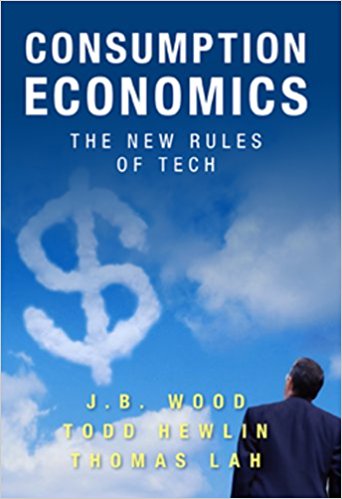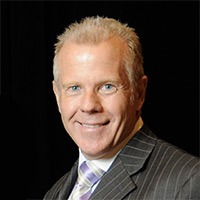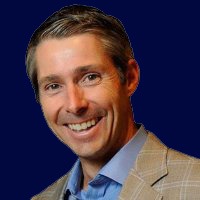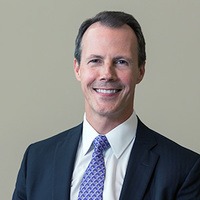Consumption Economics Summary

4 min read ⌚
 The New Rules of Tech
The New Rules of Tech
With the process of “cloudization” under way, it’s good to have a book to guide you through it. And “Consumption Economics” is one of the best you’ll read, both in terms of theory and practice.
Let us walk you through it!
About J. B. Wood, Todd Hewlin and Thomas Lah
 J.B. Wood is the CEO of TSIA (the Technology Services Industry Association) and one of the leading authorities on the “x-as-a-service” business model.
J.B. Wood is the CEO of TSIA (the Technology Services Industry Association) and one of the leading authorities on the “x-as-a-service” business model.
 Todd Hewlin is an expert in the field as well, managing director of TCG Advisors, and author of one more book, “B4B.”
Todd Hewlin is an expert in the field as well, managing director of TCG Advisors, and author of one more book, “B4B.”
 Thomas Lah is the executive director of the TSIA and the author of several books, the last of which is “Technology-as-a-service Playbook.”
Thomas Lah is the executive director of the TSIA and the author of several books, the last of which is “Technology-as-a-service Playbook.”
“Consumption Economics Summary”
We know that you are familiar with what a “generation gap” is, but have you ever heard of the “consumption gap”?
Probably not.
So, it’s probably good, before telling you what consumption economics is, to teach you what it is based upon.
And it’s fairly simple!
Theoretically, consumption gap is the gap between what you pay for and what you actually use. Practically, it means that even though you’ve paid for about a hundred thousand preprogrammed options, you still use your phone to either call someone or browse the Internet.
Well, up to about a decade ago, IT companies used this to their benefit. In other words, you couldn’t exactly buy a different kind of phone, but the one with all the options. So, you paid much more than you should have paid. Or, better yet – would have paid, if you had the option to choose.
But, then, two things happened: Steve Jobs and the Cloud.
The iPhone introduced both revolutionary flexibility and customization options which, for the first time, made users aware of what they actually need and how they can get it. In other words, Apple successfully transformed how we consume IT products.
The Cloud made an even greater step forward. It made possible for companies to start charging not before they offer their products, but during it. Or, to put it in laymen’s terms, companies nowadays don’t need to buy the Microsoft Office suite. They can just log into Office 365 online and use Microsoft Word or Microsoft Excel as much as they like.
And, of course, pay by the hour.
And the news is: they are doing it big time! In fact, 2017 was the last year when traditional Microsoft software licenses were sold in larger numbers than online subscriptions.
And, that’s what “Consumption Economics” predicted in 2011.
According to the authors, technology consultants J. B. Wood, Todd Hewlin and Thomas Lah, we’re in the middle of a paradigm shift. And your company must react immediately if it wants not to be left behind.
Namely, it’s better for anyone to use cloud services because they are both cheaper and more customizable. Say, you need Photoshop, but you need it only for one-time use. In the days before the Cloud, you had no choice but to pay for the full license. Now, you can just pay for a one-day use of the software and forget about the program altogether!
And there are many things which are already offered under the label “(put what you like here)-as-a-service.” You can either use them (if you’re a customer) or start offering your services in a similar manner (if you’re a client).
There’s no other way. Because you’ll lose big time.
But, what about the money if you’re a company? After all, you won’t be earning thousands-of-dollars-per-product, but cents-per-service!
Don’t worry: Apple and Microsoft have shown that it’s still a high-earning business.
And studies have suggested that it was always going to be the age of the long tail.
Key Lessons from “Consumption Economics”
1. Narrowing the Consumption Gap
2. The Future Is All About Consumption Economics
3. Few Things You Should Do Right Now to Not Fall Behind
Narrowing the Consumption Gap
The consumption gap is the gap which exists between what you’ve paid for a product and the actual extent to which you’re using it. In the past, this gap was pretty big, and IT companies used it: they simply didn’t offer you enough options. However, with the iPhone and cloud computing, things changed radically. And you better take note!
The Future Is All About Consumption Economics
Bill Gates successfully predicted our future in 1999. Wood, Hewlin, and Lah tried to predict the one we’re about to enter. In their opinion, it will be an age of simplicity and low prices, because, well, almost certainly it will be a future of pay-as-you-consume processes.
Additionally, it will be an age of large volumes – since companies won’t earn money as quickly as before. But, they will earn enough in the long run!
Few Things You Should Do Right Now to Not Fall Behind
And you have to act fast to catch up with the time!
Start by re-engineering your products so you can offer clients customized services (beginners, intermediates, and experts). Recombine services you offer and try to align them with the requirements of the market. And be on the lookout for changes in the “x-as-a-service” model, because that’s how your future looks like.
Fortunately for the rest of us – for the first time in history – it’s customer-centric!
Like this summary? We’d Like to invite you to download our free 12 min app, for more amazing summaries and audiobooks.
“Consumption Economics” Quotes
Tech is not immune to commoditization – it’s just harder to spot. Share on X IT’s dominance is giving way to the growing influence of the end business user. Share on X The new world of software looks to be smaller, more focused, highly modular and cheaper. Share on X Customers are rapidly losing their awe of complexity. Simplicity is becoming the new hallmark of sophistication. Share on X We need to learn to qualify the customer’s ability to consume. Share on X







